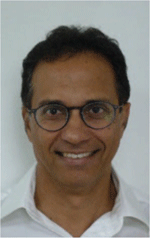Thermal maturity and reservoir quality of the Velkerri Formation, Beetaloo Sub-basin, Northern Territory
Claudio Delle Piane A F , I. Tonguç Uysal A , Mohinudeen Faiz B , Zhejun Pan C , Julien Bourdet A , Zhongsheng Li D , Mark D Raven E and David N Dewhurst AA CSIRO Energy, 26 Dick Perry Avenue, Kensington WA 6151, Australia.
B CSIRO Energy, 1 Technology Court, Pullenvale, Qld 4069, Australia.
C CSIRO Energy, 36 Gardiner Road, Clayton, Vic. 3168, Australia.
D CSIRO Energy, 14 Julius Avenue, North Ryde, NSW 2113 Australia.
E CSIRO Land and Water, Waite Road, Urrbrae, SA 5064, Australia.
F Corresponding author. Email: claudio.dellepiane@csiro.au
The APPEA Journal 60(2) 697-702 https://doi.org/10.1071/AJ19189
Accepted: 19 February 2020 Published: 15 May 2020
Abstract
The Proterozoic (~1.43 Ga) Velkerri Formation (McArthur Basin, Northern Territory) is believed to host one of the world’s oldest petroleum systems. Drilling and production tests demonstrated the encouraging potential of this unconventional gas resource and current efforts are aimed at better defining the extent of the gas and liquid-rich portions of this shale play. In this context, we conducted a comprehensive characterisation of specimens from the Amungee Member of the Velkerri Formation (previously referred to as the Middle Velkerri) sampled along a thermal maturity gradient from wells drilled across the Beetaloo Sub-basin. The scope of our analysis was to shed light on how the organic matter in the Velkerri Formation is affected by thermal maturity and how this affects the pore structure of the host rock. To this end, we integrated light and electron microscopy imaging with Raman spectroscopy and pyrolysis techniques to define the maturity of the sediments and visualise the shale pore network. In concert with the direct imaging, bulk samples were experimentally tested to measure their gas permeability and gas adsorption capacity. The results indicate that porosity is mostly organic-hosted with pore size dominated by meso- and micro-pores (i.e. <50 nm). Methane adsorption isotherms measured at temperatures up to 80°C also show that organic content is one of the main factors controlling the amount of adsorbed gas in the Velkerri shale.
Keywords: organic matter, unconventional resource.

Dr Claudio Delle Piane is the Geoscience team leader of CSIRO’s Onshore Gas Research Program. He has a degree in Earth Sciences from the Roma III University in Italy and a PhD in geology from the Swiss Polytechnic Institute (ETH) of Zurich. A geologist with a background in structural geology and rock deformation, he joined CSIRO in 2008 as a research scientist specialising in the integration of microstructural analyses with petrophysics, geomechanics, structural geology and rock physics for the characterisation of subsurface porous rocks and the understanding of their geological history. |

I. Tonguç Uysal is a geoscientist focusing on isotopic dating and tracing of hydrothermal systems and thermal histories of sedimentary basins as well as active fault systems. Tonguç has recently joined Ankara University in Turkey, after being a Senior Research Scientist in the Energy Business Unit at CSIRO, Australia. Tonguç has a BSc (Hons) degree from Istanbul Technical University, a Masters degree from Aachen University in Germany, and obtained a PhD from the University of Queensland in 1999. |

Mohinudeen Faiz is a principal research scientist at CSIRO Energy. He holds a BSc (Hons) degree from the University of Peradeniya (Sri Lanka), and MSc and PhD in geology from the University of Wollongong (Australia). Faiz was previously employed at Origin Energy as a Principal Geoscientist where he worked on conventional and unconventional hydrocarbon exploration projects in various basins in Australia, southern Africa, South America and Asia. His specialties include petroleum systems modelling and the application of petroleum geochemistry throughout the lifecycle of exploration and development projects. He is a member of AAPG, PESA and ICCP. |

Dr Zhejun Pan is a senior principal research scientist and the Reservoir Engineering team leader of CSIRO’s Onshore Gas Research Program. He holds a Bachelors degree in chemical engineering from Zhejiang University, China and a PhD in chemical engineering from Oklahoma State University, USA. He joined CSIRO in 2004 as a reservoir engineer. He works on gas storage and flow behaviour in unconventional reservoirs, including shale and coal seam. |

Julien Bourdet is a Senior Research Scientist and team leader of the petroleum systems team at CSIRO Energy. He holds a PhD in geosciences from the University of Lorraine (Nancy, France), a Masters from the University of Burgundy (Dijon, France) and a Bachelors from the University of Pierre et Marie Curie (Paris, France). His work focuses on reservoir diagenesis and geofluids, integrating a wide range of techniques and data covering microscopy, fluid inclusion, XRD, SEM, XRF, geochemistry and geochronology along with geochemical and basin modelling tools. He is an academic editor for Geofluids. |

Zhongsheng Li is a Research Scientist at Onshore Gas Program, CSIRO Energy. He holds a BSc and MSc in geology from the China University of Geosciences, and a PhD in geology from the University of Canterbury, New Zealand. His research is primarily to develop and apply organic petrological techniques to evaluate the thermal history of petroleum source rocks and unconventional oil and gas reservoirs (shale gas and coal seam gas) characterisation. He has extensive experience and expertise in using unique techniques (FAMM – Fluorescence Alteration of Multiple Macerals, and RaMM – Raman Maturity Method) to evaluate the maturity and quality of petroleum source rocks. This research helps industry to prioritise exploration acreage based on petroleum prospectivity and provides insights into the mechanisms of petroleum generation. Prior joining CSIRO in 2012, he previously worked at University of NSW as Research Associate and Senior Research Associate. |

Mark Raven is the leader of the Mineralogy and Geochemistry Characterisation team in CSIRO Land and Water, Adelaide, South Australia. He has a degree in Applied Physics from the WA Institute of Technology in Western Australia and an MSc in Applied Science (Physics) from Curtin University, Western Australia. He joined CSIRO in 1986 as an X-ray analyst to develop and apply XRF and XRD techniques to a wide range of industries and disciplines, primarily focussing on the characterisation of clays and clay minerals. |

Dave Dewhurst is a senior principal research scientist at CSIRO Energy in Perth. He holds a BSc (Hons) in geology from the University of Sheffield (UK) and a PhD in physics from the University of Newcastle upon Tyne (UK). He previously held post-doctoral positions at the University of Birmingham (UK), the University of Newcastle upon Tyne (UK), the Institut Français du Pétrole near Paris and Imperial College, London, before moving to CSIRO in 1998. He works on mechanical and physical properties of rocks for petroleum exploration and development, specialising in overburden and gas shales, as well as reservoir and seal evaluation for geological storage of CO2 and other gases. He is a member of AAPG, SEG, GSL and EAGE. |
References
Abbassi, S., Kennedy, M., and Schaefer, B. (2017). Dating deposition and petroleum migration from the same samples using the Re/Os geochronometer. Goldschmidt Conference, Paris, 13–18 August 2017. Available at https://goldschmidtabstracts.info/abstracts/abstractView?id=2017005211 [verified 4 March 2020]Bhandari, A. R., Flemings, P. B., Polito, P. J., Cronin, M. B., and Bryant, S. L. (2015). Anisotropy and stress dependence of permeability in the Barnett shale. Transport in Porous Media 108, 393–411.
| Anisotropy and stress dependence of permeability in the Barnett shale.Crossref | GoogleScholarGoogle Scholar |
Jackson, M. J., Powell, T. G., Summons, R. E., and Sweet, I. P. (1986). Hydrocarbon shows and petroleum source rocks in sediments as old as 1.7 × 109 years. Nature 322, 727–729.
| Hydrocarbon shows and petroleum source rocks in sediments as old as 1.7 × 109 years.Crossref | GoogleScholarGoogle Scholar |
Kouketsu, Y., Mizukami, T., Mori, H., Endo, S., Aoya, M., Hara, H., Nakamura, D., and Wallis, S. (2014). A new approach to develop the Raman carbonaceous material geothermometer for low-grade metamorphism using peak width. Island Arc 23, 3–50.
| A new approach to develop the Raman carbonaceous material geothermometer for low-grade metamorphism using peak width.Crossref | GoogleScholarGoogle Scholar |
Kwon, O., Kronenberg, A. K., Gangi, A. F., Johnson, B., and Herbert, B. E. (2004). Permeability of illite‐bearing shale: 1. Anisotropy and effects of clay content and loading. Journal of Geophysical Research. Solid Earth 109, B10205..
Ma, Y., Pan, Z., Zhong, N., Connell, L. D., Down, D. I., Lin, W., and Zhang, Y. (2016). Experimental study of anisotropic gas permeability and its relationship with fracture structure of Longmaxi Shales, Sichuan Basin, China. Fuel 180, 106–115.
| Experimental study of anisotropic gas permeability and its relationship with fracture structure of Longmaxi Shales, Sichuan Basin, China.Crossref | GoogleScholarGoogle Scholar |


